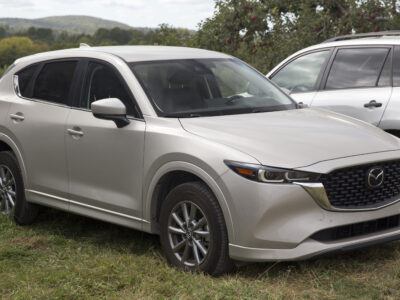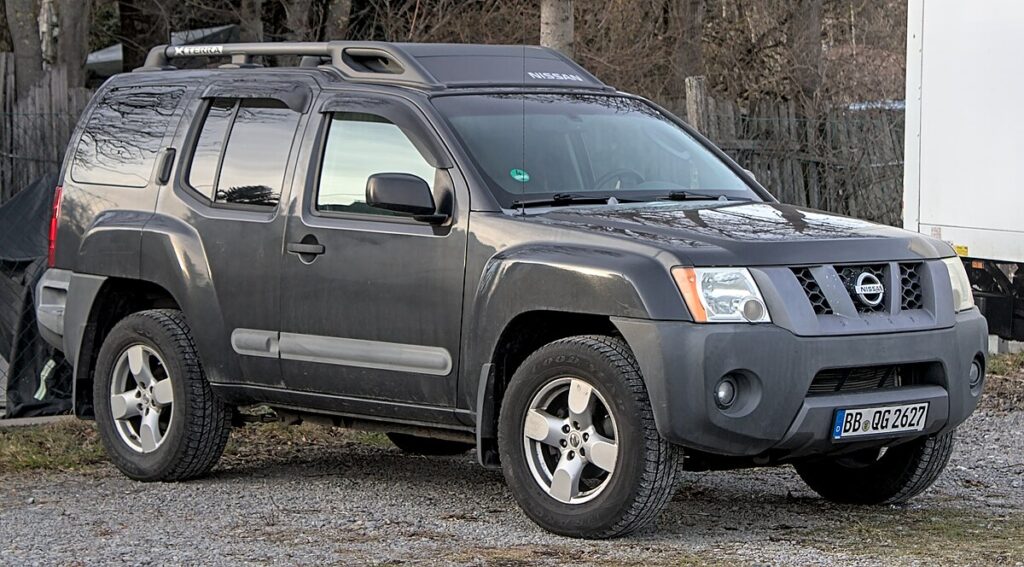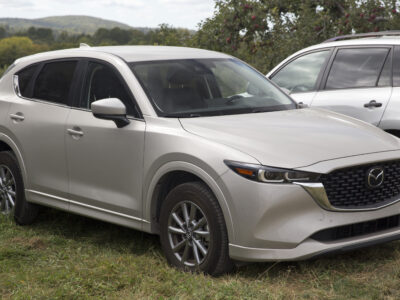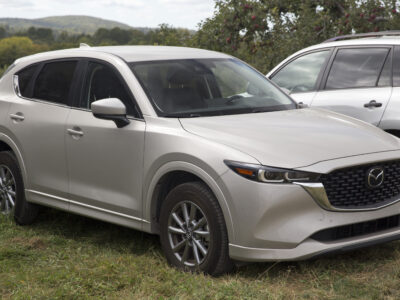
Nissan Xterra MPG & Fuel Economy by Model Year (2000-2015)

The Nissan Xterra, known for its rugged off-road capability and utilitarian design, has also built a loyal following for its reliability and versatility. However, its fuel economy has varied significantly across model years and configurations. Below, we present a complete breakdown of real-world MPG data sourced from thousands of drivers, alongside practical insights into how to improve efficiency and what to expect from each model year.
- Overview: Real-World Data From Over 26 Million Miles
- Nissan Xterra Average MPG by Model Year
- MPG Trends and Efficiency Evolution
- Engine and Drivetrain Impact on Fuel Efficiency
- Real-World Usage Patterns
- Fuel Economy by Generation
- How to Improve Nissan Xterra Fuel Efficiency
- Comparison With Similar SUVs
- Ownership Perspective: Why MPG Isn’t the Whole Story
- Conclusion
Overview: Real-World Data From Over 26 Million Miles
According to aggregated owner reports, 1,217 Nissan Xterra vehicles have logged more than 26.3 million miles of driving, averaging 16.1–17.3 MPG depending on the model year and configuration. This reflects genuine, everyday performance—covering city commutes, highway cruising, and off-road adventures alike.
Nissan Xterra Average MPG by Model Year
| Model Year | Average MPG | Vehicles Reported | Miles Tracked |
|---|---|---|---|
| 2015 | 17.0 | 43 | 1,218,866 |
| 2014 | 15.8 | 39 | 1,166,094 |
| 2013 | 17.2 | 47 | 1,038,455 |
| 2012 | 16.1 | 74 | 2,317,242 |
| 2011 | 15.8 | 112 | 2,899,937 |
| 2010 | 16.8 | 68 | 1,735,097 |
| 2009 | 17.3 | 23 | 762,729 |
| 2008 | 16.3 | 73 | 1,845,121 |
| 2007 | 16.6 | 98 | 2,335,885 |
| 2006 | 16.2 | 112 | 2,292,206 |
| 2005 | 16.2 | 109 | 2,308,259 |
| 2004 | 14.9 | 80 | 1,253,796 |
| 2003 | 15.1 | 77 | 1,227,968 |
| 2002 | 14.4 | 109 | 1,288,969 |
| 2001 | 15.8 | 85 | 1,242,489 |
| 2000 | 16.1 | 68 | 1,353,180 |
MPG Trends and Efficiency Evolution
Between 2000 and 2015, the Nissan Xterra maintained relatively consistent fuel efficiency, with only marginal improvements over the years. The best-performing models, such as the 2009 Xterra (17.3 MPG) and 2013 Xterra (17.2 MPG), demonstrated moderate gains compared to earlier generations.
Notably, despite engine refinements and drivetrain adjustments, the Xterra’s robust frame and off-road design inherently limited its fuel economy improvements.
You may be interested in reading Nissan Xterra Towing Capacity: Complete Breakdown by Year and Configuration
Nissan Xterra Towing Capacity: Complete Breakdown by Year and ConfigurationEngine and Drivetrain Impact on Fuel Efficiency
The Xterra’s 4.0L V6 engine in later models provided strong torque and reliability, but at the cost of higher fuel consumption. Earlier generations featured 3.3L V6 engines that offered slightly better MPG in highway driving but lacked the same power and towing capability.
| Engine | Drivetrain | Typical Combined MPG |
|---|---|---|
| 3.3L V6 (2000-2004) | 4x2 | 16–18 |
| 3.3L V6 (2000-2004) | 4x4 | 14–16 |
| 4.0L V6 (2005-2015) | 4x2 | 16–17 |
| 4.0L V6 (2005-2015) | 4x4 | 15–16 |
Automatic transmissions generally averaged 1–1.5 MPG lower than manual versions, particularly in city driving scenarios.
Real-World Usage Patterns
Owners report the following patterns affecting MPG performance:
- Highway cruising (60–65 mph): up to 20 MPG
- City stop-and-go driving: around 13–15 MPG
- Off-road or towing conditions: as low as 12 MPG
Xterra owners often balance fuel economy with off-road durability, accepting lower MPG for enhanced traction, suspension articulation, and load capacity.
You may be interested in reading Nissan Xterra Towing Capacity: Complete Breakdown by Year and Configuration
Nissan Xterra Towing Capacity: Complete Breakdown by Year and Configuration Nissan Xterra Bolt Pattern Guide: Complete Specifications, Torque Values, and Fitment Chart
Nissan Xterra Bolt Pattern Guide: Complete Specifications, Torque Values, and Fitment ChartFuel Economy by Generation
First Generation (2000–2004)
Characterized by a boxy body-on-frame SUV platform, the first-gen Xterra offered simplicity and reliability.
Average MPG hovered between 14.4 and 15.8, depending on drivetrain.
Second Generation (2005–2015)
The switch to a 4.0L VQ40DE engine brought stronger acceleration and towing capacity (up to 5,000 lbs) but only slight MPG gains. The most efficient years—2009–2013—maintained roughly 17 MPG combined.
How to Improve Nissan Xterra Fuel Efficiency
| Tip | Expected Improvement |
|---|---|
| Maintain proper tire pressure | +0.5 to +1.0 MPG |
| Use synthetic oil | +0.3 MPG |
| Clean or replace air filter regularly | +0.5 MPG |
| Remove roof racks or cargo boxes when unused | +1.0 MPG |
| Drive smoothly, avoid rapid acceleration | +2.0 MPG potential |
These small adjustments collectively can increase real-world MPG by up to 10% without compromising performance.
Comparison With Similar SUVs
| Model | Average MPG | Drivetrain |
|---|---|---|
| Nissan Xterra | 16.5 | 4x4 |
| Toyota 4Runner | 18.0 | 4x4 |
| Jeep Wrangler (JK) | 17.0 | 4x4 |
| Ford Explorer (V6) | 18.5 | AWD |
The Xterra ranks mid-pack in efficiency—better than some off-road SUVs but behind more modern crossover designs.
You may be interested in reading Nissan Xterra Towing Capacity: Complete Breakdown by Year and Configuration
Nissan Xterra Towing Capacity: Complete Breakdown by Year and Configuration Nissan Xterra Bolt Pattern Guide: Complete Specifications, Torque Values, and Fitment Chart
Nissan Xterra Bolt Pattern Guide: Complete Specifications, Torque Values, and Fitment Chart Nissan Xterra Tire Pressure Guide (2000–2015): Complete PSI Chart by Year and Tire Size
Nissan Xterra Tire Pressure Guide (2000–2015): Complete PSI Chart by Year and Tire SizeOwnership Perspective: Why MPG Isn’t the Whole Story
Xterra owners prioritize durability, power, and off-road capability over pure fuel efficiency. Its rugged construction, low-end torque, and reliability make it a favorite for adventurers, overlanders, and outdoor enthusiasts despite its modest MPG ratings.
Conclusion
The Nissan Xterra’s real-world fuel economy averages between 15–17 MPG, balancing off-road strength with everyday usability. While not designed for efficiency, its performance, reliability, and ruggedness continue to make it one of the most respected adventure SUVs in its class.
If you want to know other articles similar to Nissan Xterra MPG & Fuel Economy by Model Year (2000-2015) you can visit the category Blog.
Deja una respuesta






More content of your interest